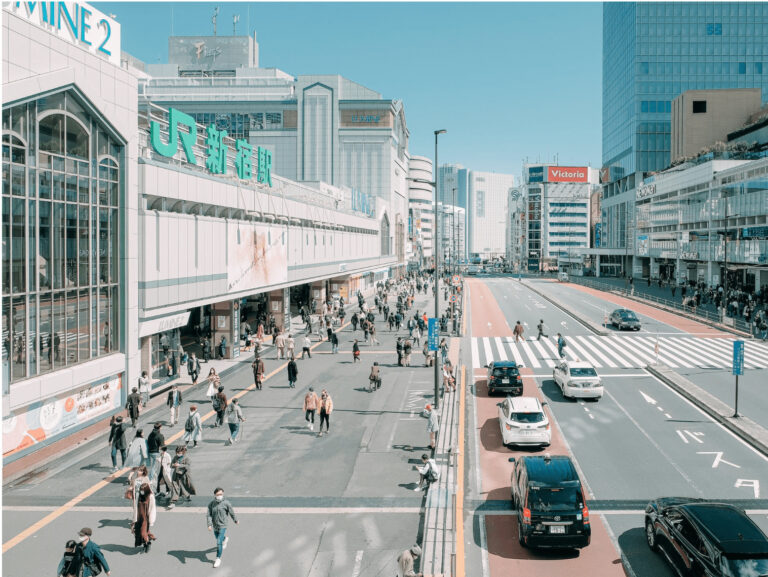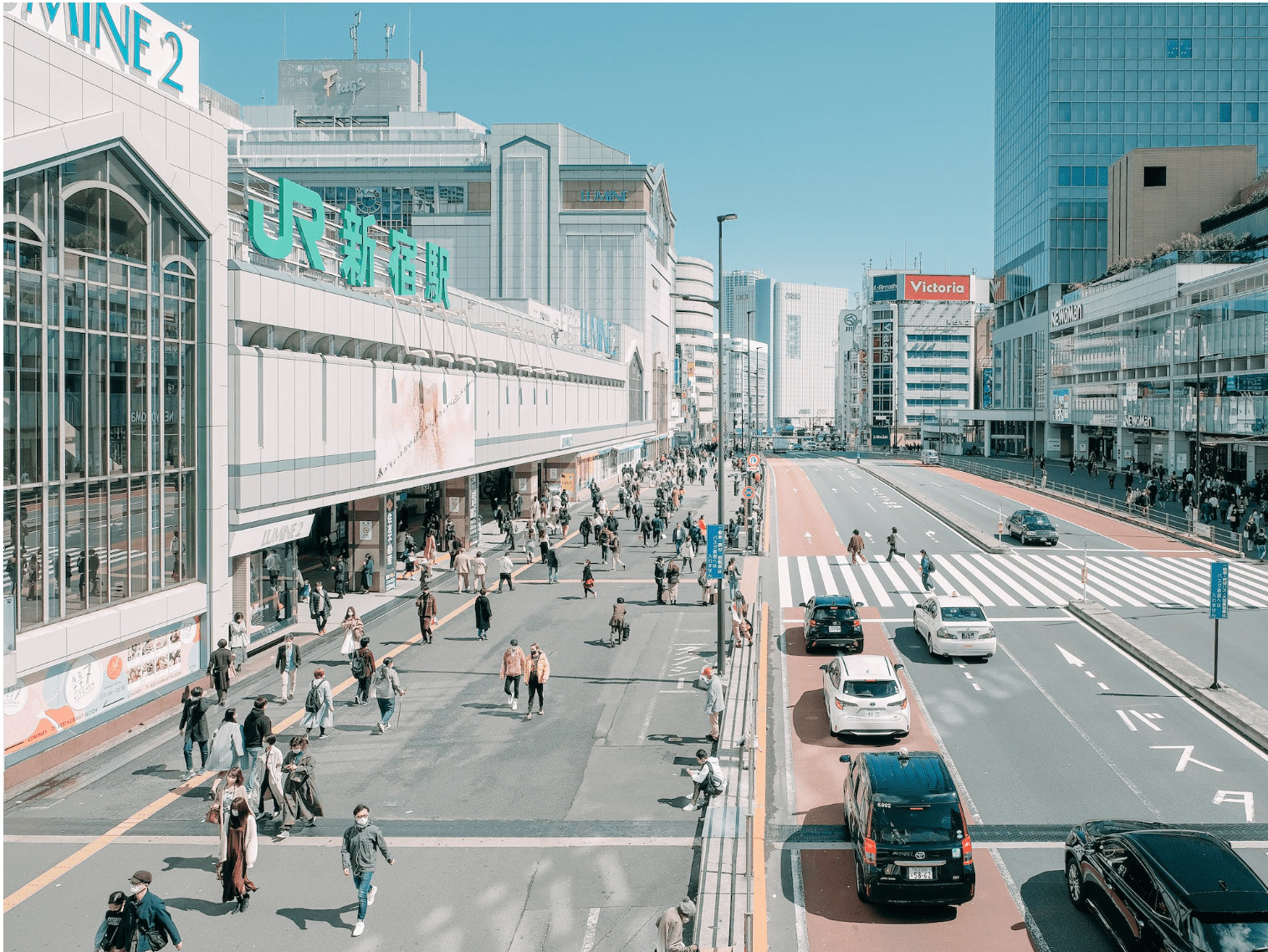

Amazing Japan’s Public Transport System
What are the secrets behind Japan’s world-class public transport system? Japan boasts one of the most exceptional public transport systems in the world, and the reason why is no secret. With millions of commuters using trains, subways, buses, and taxis daily, it’s clear that Japan’s transportation network provides the perfect combination of speed, convenience, safety, and affordability. How did Japan create such a remarkable public transport system? And what can other nations learn from their example? In this article, we’ll delve into the secrets behind Japan’s world-class public transport system. Also, we will explore how it contributes to its overall quality of life and economy.
The History of Japan’s Public Transport System
Japan has a well-established public transportation system that began in the late 1800s with the construction of the first railway line between Tokyo and Yokohama. After World War II, Japan invested in and improved its rail network to rebuild its infrastructure and boost the economy. Japan is known for inventing the Shinkansen high-speed train in 1964, which has become a symbol of Japan’s technological advancement. Today, the rail network spans over 12,000 miles and transports more than 5 billion passengers annually. Thus, making it the busiest rail system in the world.
In addition to trains, Japan’s public transport system includes subways, buses, and taxis, which complement and connect with the rail system. The subway system is one of the oldest and largest in the world. The first line opened in Tokyo in 1927, serving over 10 million commuters daily. Buses are also commonly used, especially in mountainous and rural regions where trains are unavailable. Taxis are a convenient option, especially for short distances or late-night hours when other modes of transport are less available.
Advantages
Efficiency and punctuality
Japan’s public transport system is a well-oiled machine that offers its users many advantages. One of the most striking benefits is its efficiency and punctuality. All modes of transport, from trains and subways to buses and taxis, run like clockwork and rarely experience any delays or disruptions.
This is due to a combination of factors, such as a robust infrastructure, strict schedules, and a culture of punctuality among staff and passengers. As a result, users can rely on the public transport system to get them to their destination on time and plan their trips accordingly.
Safety and reliability
Another significant advantage of Japan’s public transport system is its safety and reliability. With advanced technology, such as automatic train control, accidents and incidents are extremely rare. Furthermore, the drivers and conductors undergo rigorous training and professionalism, making it one of the safest and most reliable systems. This instills confidence in users, who feel secure while using the public transport system and trust that they will reach their destination safely.
Affordable and accessible
In addition to safety and reliability, Japan’s public transport system is also affordable and accessible. Users can choose from various ticket options, including single, return, or multiple, or use rechargeable cards such as IC cards that work for most modes of transport. Special passes, such as the Japan Rail Pass, allow unlimited use of JR trains, including the Shinkansen, for a certain period. Subway passes, which allow unlimited use of subways for a certain period, can save users money and hassle. Stations and stops are usually near major attractions, shopping areas, or hotels. They have clear signs and announcements in English and other languages. Hence, making it easy for users to navigate the system.
Comfortable and convenient
Finally, Japan’s public transport system offers users a comfortable and convenient experience. Trains, subways, buses, and taxis are clean, spacious, and well-equipped, with air-conditioning. Also, they have Wi-Fi and security cameras. Users can also enjoy the scenic views along the way or relax in their seats with a book or snack. Staff members are typically polite and helpful. Moreover, users can communicate with them quickly and even receive tips or recommendations about the local area. Overall, Japan’s public transport system is a top-notch service that provides users with an unparalleled experience.
The Challenges and Opportunities
- Japan’s public transport system faces both challenges and opportunities. One of the main difficulties is the issue of crowding and congestion, particularly during peak hours and holidays. It can result in long lines, packed carriages, or limited seating, which can be uncomfortable and stressful for users. Moreover, it highlights the need for the system to accommodate its users’ growing and changing conditions. To address this challenge, the public transport system may need to explore options such as expanding and upgrading its infrastructure, adding more tracks, trains, or stations, or introducing new modes of transport that run faster and smoother than conventional trains.
- Another key opportunity is the positive environmental and social impact that Japan’s public transport system can have. The system reduces greenhouse gas emissions, energy consumption, and traffic accidents while promoting social cohesion, mobility, and tourism. However, this also means that the approach must be mindful of environmental and social challenges, including pollution, noise, or land use, and balance stakeholders’ interests, such as the government, operators, users, and communities. Adopting sustainable and inclusive practices, such as using renewable energy sources, implementing green policies, or engaging with the public and private sectors, will help to address these challenges.
The Lessons from Japan’s Public Transport System
Japan’s public transportation system is truly a remarkable achievement and a source of inspiration for the country and the rest of the world. The system serves as a perfect example of how a country can create and maintain an efficient, punctual, safe, affordable, accessible, comfortable, and convenient public transportation system that caters to the needs and preferences of its users. While also being mindful of its environmental and social impact. Moreover, Japan has shown how to overcome challenging situations and seize opportunities by continuously innovating and improving the service and quality of its public transportation system.
The Japanese public transportation system is an excellent model for other countries that wish to improve or create their public transportation systems to enhance their people’s quality of life and economy. Have you ever experienced using Japan’s public transportation system, or would you like to use it in the future? Let me know in the comment below. Thanks for reading, and I’ll see you at the next one.
References:
Mo, J., & Mo, J. (2023, January 5). How We Traveled Using Public Transportation In Japan – World Of Waterfalls. Retrieved September 16, 2023, from https://www.world-of-waterfalls.com/how-we-traveled-using-public-transportation-in-japan/.
InsideJapan Tours. (2012, March 12). 10 Reasons why Japan is so great – No. 2 Public transport. Retrieved September 16, 2023, from https://www.insidejapantours.com/blog/2012/03/12/10-reasons-why-japan-is-so-great-no-2-public-transport/.
Visit Nagasaki. (n.d.). Why Japan Has The Best Train System In The World. Retrieved September 16, 2023, from https://visit-nagasaki.com/why-japan-has-the-best-train-system-in-the-world/.
Japaniverse. (n.d.). The Japanese Transportation System | Japaniverse Travel Guide. September 16, 2023, from https://www.japaniverse.com/japanese-transportation-system/.




